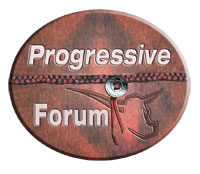Progressive Forum is a compilation of viewpoints from cattle producers on a given topic. Hear what those with boots on the ground have to say about the issues. What is the most unique feedstuff you’ve used?

Antelope Springs Ranch, LLC; Rogerson, Idaho
The most unique feedstuff I have ever used is cull hashbrown patties, shreds, tater tots and French fries.
We were feeding our weaned calves one winter and trying to cut our feed costs. I had a friend who knew of cull potato products for sale, so we figured we would give it a try.
Little did we know this was the deal of the year. When the truck showed up and dumped its 33-ton load in our commodity bay, our hired man was sure there had been a mistake.
There was a mountain of product he figured was meant for human use. He asked if we were going to be having a huge breakfast feed for the county and if there was, were eggs, orange juice and toast on the way.
I explained to him this feed was for the calves and it was defective product for the food industry, so made accessible to us.
The product was either overcooked, undercooked, improper size, past sale date, etc., so no longer eligible to be sold into the consumer market.
The calves loved it. We mixed it in our TMR wagon with haylage, barley, straw and hay. The combination of grease and potatoes was perfect for them.
Their hair got shiny, they gained better than they had on rolled corn, and the cost was about half. The only problem we had was it was hard to get this product consistently, and the hired man kept picking through the pile and taking hashbrowns home with him to eat.

Kirk Adams
SK Ranch; Alcova, Wyoming
I worked with top nutrition experts at colleges and major feed suppliers to develop a feed cattle will eat and do well on.
We now have all of our natural cattle on a cob, molasses, flax oil and pea feed mixture. The whole idea is to make beef healthier for human consumption.
We have it tested every year and are very happy with the results. The cattle carcasses are at a higher yield (dressing percentage) than before, and most of the cattle will grade choice and prime.
The omega 3 and 6 percentages in the meat are 7 percent higher than normal feedlot-fed cattle and getting better every year as we make small changes.
Currently, we are feeding this mixture to about 100 head per year, and the cattle really like the feed and clean it up every day.
I feed about 12 pounds per head per day and they average a 3.6-pound daily gain. The cattle actually test leaner than grass-fed beef, and the flavor and moisture of the meat is outstanding.
The only drawback is it is labor-intensive, and the flax oil will turn rancid in the heat if left in storage too long. My local feed dealer has helped with the feed changes and has rotated his feed out, so it is never stored too long.

Jerry Maltby
Broken Box Ranch; Williams, California
Probably the best all-around product I have used is chopped rice straw. I use it in different rations in the feedlot, both as a 3-by-4-by-8 foot bale with the strings left on in the pens or mixed in my Supreme mixer.
We also put the rice straw in the big bales, both in our irrigated pastures, as we are in the foothills during the winter, along with a protein lick tank.
The rice straw is low in protein but if put up correctly, we can get TDN in the 50s. It usually feeds better the second year than the first year.
It will add carrying capacity to your pastures and increase gains by slowing down the passage in the rumen, so there is better processing of your nutrients with more time in the stomach. Rain doesn’t make it unpalatable to the cattle.
We have shipped rice straw to three states because of its low cost. Rice straw is not all the same; you really need to know how it was put up and the varieties of rice that were baled in order to really understand the nutrients of what you are feeding.

Travis Bell
Edgewood Ranch; Fordville, North Dakota
One unique feed source that isn’t used year-round or even available year-round but has great value to eat and is affordable is potatoes.
The uniqueness with potatoes is there are many different ways you can feed and handle them. Many producers just dump them on the pasture ground and let the cows have as much as they want with no expense with tractors and labor involved.
We find this works very well for us with short-term cows we buy, as the gain is very good on these cattle. They are filled up and only use the grass to satisfy their desires.
The downfall with feeding potatoes as a full-feed to breeding stock is they can tend to get too fat, and their feet tend to get foundered or soft-footed; therefore it’s best to limit feed to replacement females or bulls.
If the potatoes are washed, or minimal dirt on them, we can also run them through a TMR wagon and process them into a potato stew.
We do this mostly so we will not have choking issues. A lot of times when starting calves or cows, we grind them up and introduce them to our ration; once the cattle acquire the taste of potatoes, that will be the first thing they go after in the bunk. It’s kind of like giving candy to kids; they love the taste and always want more. ![]()










